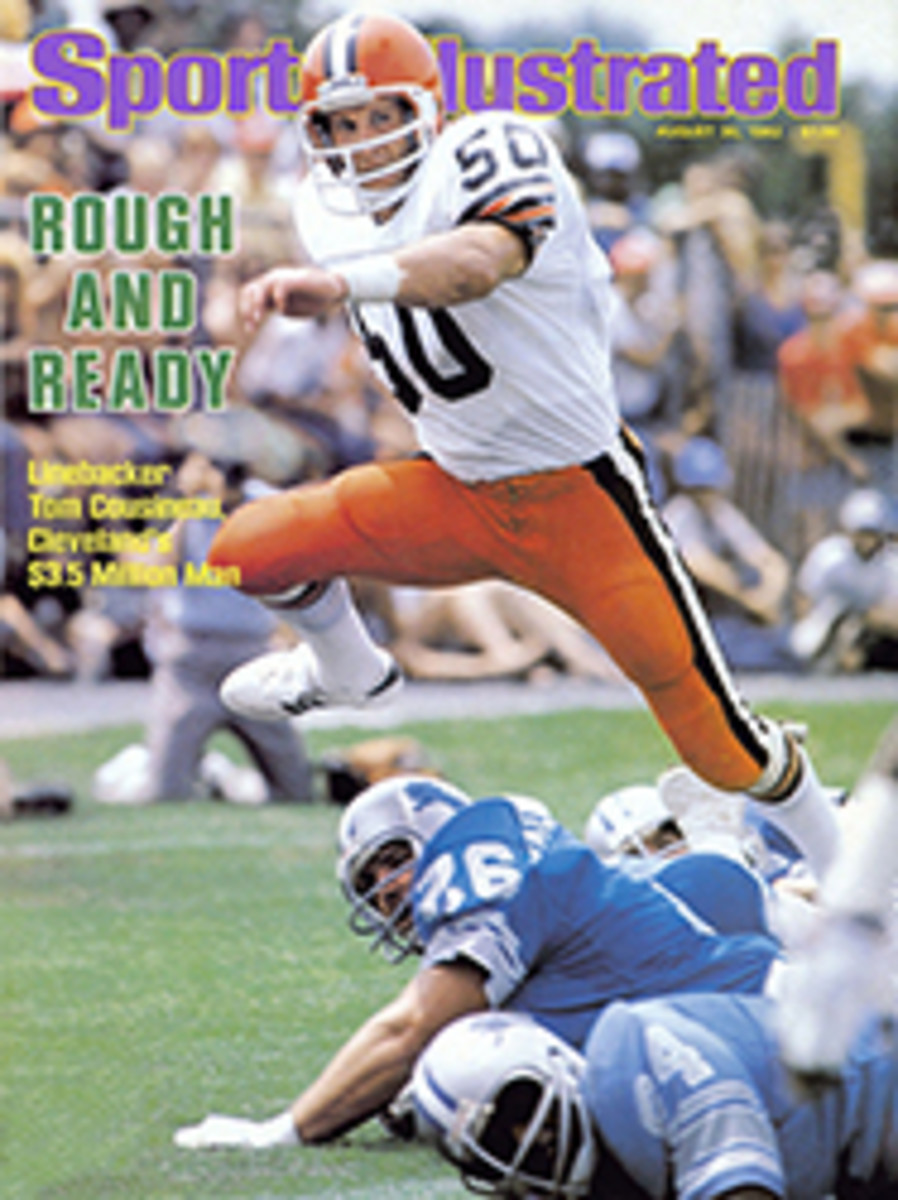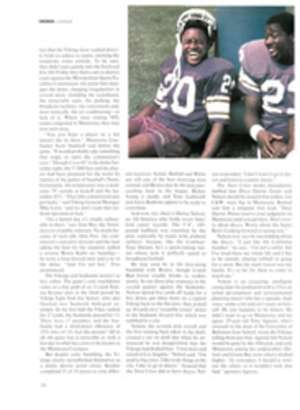
Not Quite Down To Empty For Indy
Steve Lundquist rose from his chair in an Indianapolis hotel room last Friday night, a simple enough procedure for the brawny world-record holder in the 100-meter breaststroke, but one he would come to regret. Well, at least regret for 24 hours. The 21-year-old SMU senior and his fellow swimmers had come to Indianapolis for the U.S. Long Course Championships, hoping to smash a slew of world records, thereby helping to offset their less than brilliant showing at the recent World Aquatic Championships in Equador. And what more likely place in which to do it than the spanking-new Natatorium, a multimillion-dollar swimming heaven? But with three of four days of competition over, the U.S. was bombing again. Only one record had been broken, the American mark in the 800 freestyle, by Tony Corbisiero, an injury-prone Columbia University senior from Queens, N.Y.
Injuries and infirmities seemed to go hand in hand with success at Indianapolis, all of which brings us back to last Friday night: Lundquist arose from his chair, and his left knee buckled painfully beneath him. By morning it was swollen, but he iced it down and said a few prayers, and that evening he dived from the block in the finals of the 100 breaststroke. One minute and 2.53 seconds later he had broken his own world record of 1:02.62, set 33 days earlier at the World Trials in Mission Viejo, Calif. Then he informed the world of his knee trouble.
"When did it start?" he was asked.
"When I was 13 and messing around doing crazy stuff," he said. "But don't ask what. And then it didn't bother me again until last night."
"Did it really hurt while you were swimming?"
"It certainly hurt all day," he said. "On the dive, I put most of the pressure on my right knee, but when I started kicking—the breast kick is tough on the knees—there was no pain. It hurt afterward, though, and it hurts now, but the world record kind of dulls the pain."
"What's going to be your next goal, the Olympics?"
"No, it's helping SMU win next year's NCAAs. I think they're going to be held here [in March], and this is an incredible facility, by the way."
That facility, by the way, caused even more excitement at Indianapolis than did Lundquist, though few of the swimmers had any conception of the intricate planning that went into building it. They could see the six-lane, 50-meter warmup pool, the eight-lane, 50-meter competition pool, the elevators to the diving platforms, the railings on the starting blocks and the advanced gutter system that keeps waves from rebounding off the pool sides as well as any other in the country, and that the competition pool was unusually deep. But they couldn't know the lengths to which the designers had gone to make the pool fast: for example, that crystals of potassium permanganate had been placed at various depths of several test pools, and that swimmers had then been directed to pass over them. At a depth of 7½ feet, it was observed that the crystals no longer scattered. So, to be on the safe side, the pool was given a uniform depth of 10 feet, with the result that there is no turbulence off the bottom.
Lundquist was one of only five U.S. swimmers who won individual events at the worlds—his victory was in the 100 breast—which had begun just five days after the trials ended. And the long course nationals followed the worlds by only 11 days. So hopes for redemption at Indianapolis may not have been realistic. As Mission Viejo Coach Mark Schubert put it, "The majority of the people at this meet are on the back side of too many tapers, three of them in as many weeks. They're not in condition to deliver maximum performances."
Corbisiero was one of the notable exceptions. He had failed to qualify for the worlds, but just four days before the start of the nationals he won three events at New York's Empire State Games, the 400, 800 and 1,500 free. And then, on the first day at Indianapolis he set his first American record, in the 800, at the same time winning his first national championship. As he completed 300 meters of the race, the pool announcer shouted, "Tony Corbisiero is three seconds ahead of Brian Goodell's American record of 7:59.66." That seemed poetic justice. In the 1981 indoor short course nationals Corbisiero had become only the second swimmer ever to break nine minutes for 1,000 yards. Unfortunately, Goodell was the first, in the same race. Now Corbisiero broke Goodell's record, finishing in 7:58.50 to become the first Columbia swimmer to win a national title in 37 years. And he did it a little more than two months after a badly pulled shoulder forced him out of the Seventeen magazine meet in Mission Viejo.
Earlier in 1982 Corbisiero had suffered from such severe stomach ailments that he couldn't work out without becoming sick. The trouble originated with his cooking, but when asked what he was cooking, he replied, "Well, heating up, actually. I was eating giant hoagie bombers, from the deli. You know, the works: peppers, onions, pepperoni, salami, three of them a day. The doctor said, 'Keep it up and you'll develop an ulcer.' "
Corbisiero's Indy 800 was only the second of 34 events at the nationals; the record came so early and so decisively that it seemed to suggest a trend. But two more days and 25 more races would pass before another mark fell. Meanwhile, Tracy Caulkins kept rolling along, winning the 200 backstroke and the 400 and 200 IM, the latter for her 42nd national title. But she set no records. "It's a lot harder to get psyched up now than when I was young," she said. Caulkins is 19.
On the last night of competition, as Lundquist warmed up, an old lady of 20 named Sue Walsh, from Hamburg, N.Y., lowered herself into the pool for the start of the 100 backstroke. (Her seven opponents averaged 16.5 years of age.) She had been suffering from a heavy cold. Two days earlier, in fact, Walsh could barely speak, and now she was tired. She coughed a few times to clear her lungs, and then the race was on. She covered the first 50 in 29.95, .13 below Linda Jezek's split when Jezek set the American record of 1:02.55 back in 1978, but Walsh didn't know that. She was afraid to look up at the digital clock on the scoreboard, an easy thing for a backstroker to do. "If I was slow I'd be upset," she said, "and if I was fast I'd be nervous."
But coming up the second 50 meters she saw a yellow rope overhead, and she knew it marked the 75-meter point. She said to herself, "It's now or never."
It was now. The junior accounting major from the University of North Carolina was the new American record holder in the 100 back, with a time of 1:02.48.
A few minutes later Lundquist would limp to the starting block, Corbisiero was looking forward to his mother's veal parmigiana, and his coach, Don Galluzzi, was talking about Caulkins. "Can you believe it? Forty-two national titles, and we were jumping and screaming over one."
But Caulkins hadn't set any records. In a meet highlighted by Lundquist, Walsh and Corbisiero, maybe she had simply been too healthy.
PHOTO
HEINZ KLUETMEIER
Lundquist dived into the 100 breaststroke final suffering from a painfully swollen knee, but a world-record time turned agony to ecstasy.
PHOTO
HEINZ KLUETMEIER
Columbia's Corbisiero: a gem of the pool.
PHOTO
HEINZ KLUETMEIER
A bad cold couldn't prevent Walsh from making a mighty splash in the 100 backstroke.

